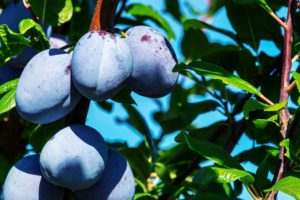Harvesting your sweet corn at the right time is crucial to ensure you enjoy the best flavor and texture. In this blog post, we’ll walk you through the process of harvesting sweet corn, from identifying the perfect time to pick to the best techniques for a successful harvest.
When to Harvest Sweet Corn
Timing is Everything
Sweet corn is typically ready to harvest about 60 to 00 days after planting, depending on the variety. The best way to determine if your corn is ready is to check the kernels.
Silk Color: The silk, which emerges from the top of the husk, turns brown and dry when the corn is ripe. This usually indicates it’s time to start checking the ears.
Kernels: The kernels should be plump and filled out. To test this, gently press a kernel with your fingernail. If the juice is milky and sweet, the corn is ready to be harvested. If it’s clear and watery, wait a few more days.
2. Corn Ear Size
While size can vary by variety, generally, an ear of sweet corn should be about 7 to 9 inches long. If the ears seem small or undeveloped, allow them more time to grow.
3. Check Moisture Levels
Harvest sweet corn on a dry day to avoid mildew and spoilage. Early morning or late afternoon is typically the best time to harvest, as the temperatures are cooler and the corn retains moisture better.
How to Harvest Sweet Corn
Gather Your Tools
You don’t need many tools to harvest corn, but having a few essentials will make the process easier. Gather the following:
Garden gloves (optional, to protect your hands)
Sharp garden scissors or shears (if you prefer not to twist off the ears)
A basket or bucket for collecting the ears
2. Inspect the Ears
Approach the corn plants and inspect the ears. You want to check that the husks are still green and that the ears feel firm to the touch.
3. Twisting the Ear
To harvest, grip the ear firmly but gently, and twist it downward. This should break the ear free from the stalk. If you encounter resistance, you might need to twist a little more before pulling.
4. Cutting the Ear
If you prefer, you can use garden scissors to cut the ear from the stalk. Cut through the husk about an inch above the ear to avoid any sap bleeding from the plant.
5. Collecting the Ears
Place all harvested ears into your basket or bucket. Try to keep the ears out of direct sunlight, as this can cause them to lose their sugar content quickly.
Post-Harvest Care
Remove the Husks
Once you’ve harvested your corn, remove the husks and silk immediately to prevent moisture loss and preserve freshness.
2. Store Properly
Sweet corn is best enjoyed fresh, but if you need to store it, keep it in the refrigerator as soon as possible. Corn can lose its sweetness quickly due to sugar conversion to starch, so it’s best to consume it within a few days. For longer storage, consider freezing cooked corn or canning it.
Additional Tips
Planting and Sowing: To ensure a continuous harvest, stagger your plantings every couple of weeks during the growing season.
Pest Inspection: Keep an eye out for pests such as corn earworms. If you find evidence of pests, consider organic pest control methods ahead of harvesting.
Harvesting sweet corn can be a delightful experience, especially when you’re able to enjoy the fruits of your labor in delicious meals. Whether you grill it, boil it, or toss it in salads, you can take pride in knowing you’ve grown and harvested your own corn. Happy harvesting!





